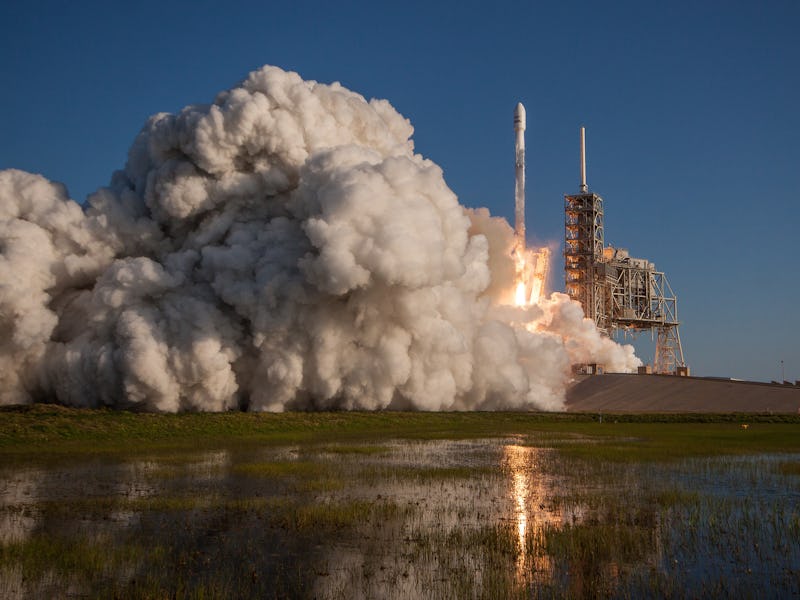SpaceX conducted a static fire test of its newly upgraded Falcon 9 rocket Saturday. The improvements made to the booster, named Block 5, are expected to increase its thrusting power and allow it to be reused 10 times without any major refurbishment and up to 100 times before it is decommissioned. This would be a major leap toward SpaceX’s goal of fully reusable rockets and crewed missions to Mars and the moon. However, before Falcon 9 Block 5 lifts humans past the atmosphere, NASA is requiring it to be extensively tested for safety.
In order to give Falcon 9 more bang for its buck, SpaceX began super-cooling its rocket fuel to reduce its volume in order to fit more onboard, during the 2016 Block 3 upgrade. At these extremely cold temperatures, the propellant would need to be loaded right before takeoff — when astronauts or multimillion-dollar payloads are aboard. This “load-and-go” operation has been subject to scrutiny after an explosion that occurred during a 2016 static ground test.
This is why NASA is requiring SpaceX to conduct at least seven unmanned missions with the Block 5 upgrade before it is cleared to transport a crew, according to NASA Spaceflight. This will ensure that the booster’s upgrades are capable of operating consistently without fail. Falcon 9 Block 5’s first scheduled mission will be launching the Bangabandhu-1 communications satellite into orbit in the coming weeks.
Saturday’s static fire test — or firing up all of the rocket’s engines but not actually launching it — seemed to go off without a hitch. SpaceX is currently analyzing data from the launch rehearsal and will announce a new launch date for the Bangladeshi satellite after it has completed its review. The mission was previously scheduled to takeoff on May 7.
SpaceX has ambitious plans to send humans to Mars by 2024 and conduct multiple moon missions. Block 5 could greatly reduce the cost of these future launches, but not before SpaceX proves to NASA that it can safely and consistently launch Falcon 9 with its new upgrade.
Correction 5/7/2018: The original version of this article stated that the Falcon 9 Block 5 upgrade had introduced super-cooled propellants. These changes were in fact implemented by Block 3 boosters introduced in 2016.
